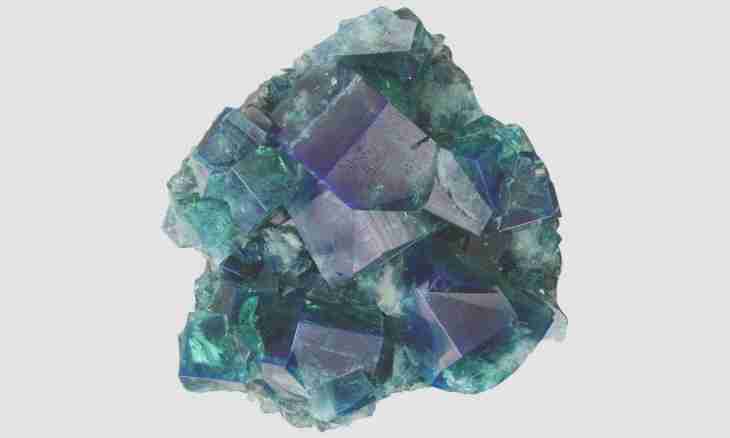Fluorine — chemical element of the main subgroup of the VII group of a periodic system, it is carried to halogens. It represents colourless gas with the strong smell similar to a chlorine smell.
Instruction
1. The molecule of free fluorine consists of two atoms and has abnormally low energy of dissociation among halogens. In the nature fluorine meets in the form of one stable nuclide. With a usual pressure it forms two crystal modifications.
2. Fluorine is the most electronegative element, in the nature it meets only in the connected state. Its main mineral — fluorspar (fluorite), however fluorine is a part of many minerals: apatite, mica, topaz, hydrosilicates, amblygonite and bastnezit.
3. Fluorine content in earth crust is 0.065% (on weight). This chemical element in small amounts is present at living organisms, for example, the human body contains about 2.6 g of fluorine, and 2.5 g — in bones.
4. Fluorine participates in processes of formation of bones and teeth and also in activation of some enzymes. The norm of intake of fluorine in our organism — 2.5-3.5 mg a day, a shortcoming and a surplus of fluorine causes various diseases.
5. Fluorine is the strongest oxidizer, many reactions of fluoration of simple substances, halogenides and oxides are irreversible, they are followed by allocation of a large amount of heat. All chemical elements, except neon, helium and argon, form steady fluorides.
6. Some reactions with participation of fluorine are spontaneously initiated at the room temperature, have chain character and often proceed with explosion or flash, in a stream — with the advent of a flame. Many salts and oxides of metals are more resistant to effect of fluorine, than metals. Noble gases, some types of glass carbon, sapphire and diamond are least susceptible to its action.
7. Production of free fluorine includes production and enrichment of fluorite ores, decomposition of concentrates under the influence of sulfuric acid, allocation, and then purification of waterless fluoric hydrogen. At the last stage carry out its electrolytic decomposition by three ways — low-temperature, high-temperature or medium temperature.
8. Fluorine is very toxic, it irritates mucous membranes and the skin, causes conjunctivitis, dermatitis and a pulmonary edema. The contact with it leads to a burn, and chronic poisoning with its connections causes flyuoroz.
9. Free fluorine is reagent in production of fluorides of graphite, noble gases, metals, nitrogen and various fluororganic derivatives. Atomic fluorine is used in chemical lasers.

